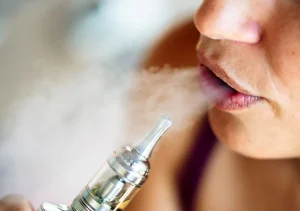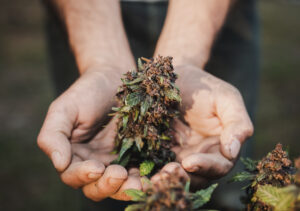Decarbed weed, also known as decarboxylated weed, undergoes a process that activates its psychoactive properties. This process involves heating the cannabis to convert non-psychoactive compounds into psychoactive ones. One common question about decarbed weed is whether it smells, and the answer lies in the chemical changes that occur during decarboxylation. Let’s explore the science behind decarbed weed and its effects on aroma and smell.
Key Takeaways
- Decarbed weed undergoes chemical changes that activate its psychoactive properties.
- The aroma and smell of decarbed weed can be affected by the decarboxylation process.
- Invest in an accurate oven thermometer to monitor the temperature during decarbing.
The Science Behind Decarbed Weed

Chemical Changes in Decarbed Weed
When you decide to decarboxylate your weed, you’re initiating a chemical reaction that transforms the non-psychoactive cannabinoids into their active forms. Raw cannabis contains THCA and CBDA, which don’t produce the ‘high’ associated with THC. By applying heat, you’re effectively shedding a carboxyl group from these compounds, resulting in THC and CBD, which have the effects users seek.
However, it’s crucial to understand that decarbing is a delicate process. If you decarb weed for too long, you risk over-decarboxylation. This can lead to a loss of potency as THC breaks down into CBN, a cannabinoid with different effects, such as increased sedation. Moreover, the precious terpenes that give cannabis its unique aroma and flavor can evaporate or degrade with excessive heat.
To avoid these issues, follow a decarboxylation temperature chart. Here’s a simplified version based on Dr. Adie Rae’s recommendations:
| Cannabinoid | Temperature (Celsius) | Time (Minutes) |
|---|---|---|
| THCA | 110 | 40 |
| CBDA | 110 | 40 |
| CBGA | 110 | 40 |
Storing your decarbed weed properly is also key. Keep it in an airtight container, shielded from direct sunlight and heat to preserve its potency and aroma.
Effects on Aroma and Smell
When you decarb your weed, you’re initiating a chemical reaction that not only activates THC but also impacts the aromatic profile of the cannabis. The process involves heat, which can alter the delicate balance of terpenes, the compounds that give cannabis its distinct smell. Terpenes are sensitive to temperature and can evaporate or degrade if exposed to excessive heat or for extended periods, leading to a less flavorful and aromatic product.
It’s crucial to avoid over-decarboxylation to preserve the quality of your cannabis. Here’s a simple guide to help you maintain the integrity of those precious terpenes:
- Monitor the temperature closely using an oven thermometer.
- Check the color and aroma of the cannabis regularly during the process.
- Aim for a light to medium brown color, which indicates optimal decarboxylation without significant terpene loss.
Remember, a properly decarbed weed should still retain most of its original aroma, though it may be less pungent than its non-decarbed counterpart. If you notice a significant reduction in smell, it’s possible that the terpenes have been compromised.
Frequently Asked Questions
What is the purpose of decarbing weed?
Decarbing weed converts the non-psychoactive THCA in cannabis into psychoactive THC, making it suitable for consumption through edibles, tinctures, or topicals.
What happens if you decarb weed for too long?
Over-decarboxylation can cause loss of potency, degradation of terpenes, and loss of other cannabinoids, resulting in a less flavorful and aromatic product.
How long does it take to decarb weed?
Decarbing weed typically takes around 20 minutes in the oven, but the time may vary depending on factors like the starting freshness and moisture content of the cannabis.




